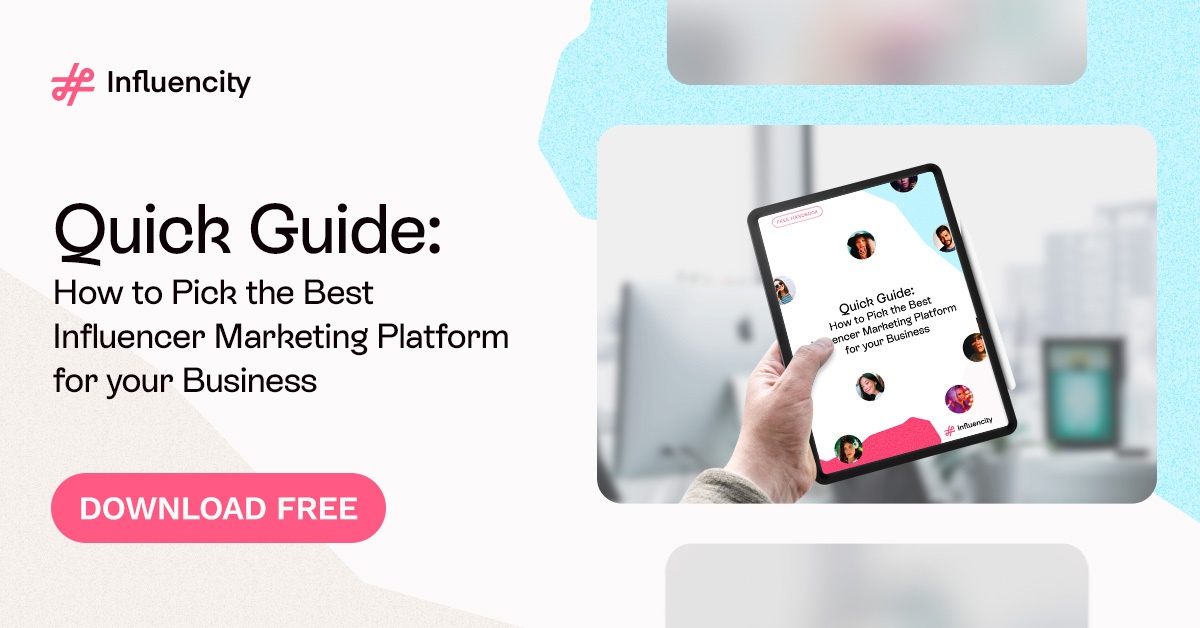Influencer Relationship Management: What it Is and Best Practices
In order to get the most from your influencer marketing campaigns, it’s important to develop a good relationship with your influencer. The more you get to know each other, the easier it will be for them to understand and communicate your brand message. To help you with this, we have prepared a comprehensive overview of what influencer relationship management is and how businesses can implement an IRM strategy to drive growth.
What Is Influencer Relationship Management?
Influencer relationship management (IRM) is a term used to describe all your interactions with an influencer. This includes your first contact with an influencer and every interaction you have before, during, and after launching an influencer marketing campaign.
The aim of an influencer relationship management strategy is to develop an ongoing collaboration where both brands and influencers can get to know each other better in order to create more relevant and effective campaigns. It’s a bit like customer relationship management, except instead of managing your relationships with your customers, you’re getting to know your influencers better in order to drive growth and boost your ROI.
How Can Influencer Relationship Management Tools Help?
Influencer relationship management tools are a form of marketing campaign software that brands and agencies can use to improve the way they develop their collaborations. With the right tools, you can nurture meaningful, ongoing relationships with your influencers. You can get to know the specific skills, content formats, platforms, and marketing styles of each influencer, and they can develop an in-depth understanding of who you are and what your brand represents.
For example, Influencity’s influencer relationship management tool has been designed to enhance each stage of the influencer relationship. This includes the research stage where you measure and compare influencer performance metrics and market segmentations, initial contacts, negotiations, campaign preparation and management, follow-ups, and final feedback. You can use the IRM to create a profile for each influencer and take detailed notes after each interaction so that everyone on your team has access to all this data.
Perhaps the biggest benefit is that, instead of storing all this information on spreadsheets and emails, you can centralize every detail and access what you need at the click of a button. This makes it much easier to stay up to date with negotiations, pricing, proposals, and collaborations.
Influencer Relationship Management Best Practices
Here are a few influencer relationship management best practices to help you develop profitable collaborations with your influencers.
Identify And Vet Influencers to Find The Right Fit
Before you use influencer relationship management tools to develop your collaborations, it’s important to identify and evaluate each influencer to make sure they are a good fit for your brand and the specific goals of your campaign.
The best way to vet influencers is to look into their background and past performance. You need to make sure that the content they post aligns with your brand and that it’s creative and engaging. You also need to make sure that their audience is relevant and likely to take an interest in your campaigns. Plus, their follower demographics need to align with your target market and users need to be active and engaged with the influencer’s posts.
Influencity has a variety of tools that can help with this, including a large influencer database with a range of filters, tools for measuring performance metrics, and features for evaluating the quality of an influencer’s audience.
Develop Mutually Beneficial Partnerships
It’s also important that the influencer you collaborate with sees the relationship as being mutually beneficial. Otherwise, they won’t be motivated to perform at their best with your campaigns.
The best way to establish a mutually beneficial partnership is to pay your influencers fairly. But there are other strategies you can use to enhance the relationship, too.
For one thing, it’s important to establish a relationship that works both ways. Make sure you provide influencers with as much information about you, your company, and your brand so that they understand the value that you are offering and can form an emotional connection with your brand. For example, if an influencer sees that endorsing your brand helps them gain exposure and promote their own brand, then they will be more invested in the relationship. Or you could even offer an influencer a commission for each direct sale that they generate with your campaign.
Measure the Success of Your IRM Program
Finally, it’s important to regularly measure and track the success of your influencer relationship management program. After all, if you don’t measure something, then how can you improve it?
The simplest way to determine how effective your relationship with an influencer is, is to monitor their performance. Monitor their content and regularly track their performance KPIs. If a relationship isn’t developing well, then you might find that the influencer is sharing confused messages that suggest that they don’t understand the nuances of your brand. This confused approach is unlikely to yield any engagement from their followers. In contrast, if your campaign is performing well and generating the desired effect, then it strongly suggests that you are building an effective and profitable partnership. And this, essentially, is the main objective of influencer relationship management.
Tags:






















%20and%20How%20Can%20They%20Benefit%20Your%20Brand%20article.jpg?length=628&name=What%20Are%20Key%20Opinion%20Leaders%20(KOL)%20and%20How%20Can%20They%20Benefit%20Your%20Brand%20article.jpg)








